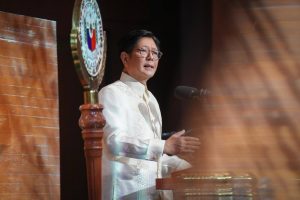A series of large-scale corruption scandals has caused a widespread uproar across the Philippines. Corruption is not a new problem, but its extent has surprised no less than Philippine President Ferdinand Marcos Jr., who publicly berated his allies for getting kickbacks from the government’s infrastructure projects.
Corruption scandals have dominated the news since last year, when Vice President Sara Duterte was accused of misusing the confidential funds allocated to her office. It led to her impeachment in the House of Representatives in February this year, but the Senate delayed its decision on whether to conduct an impeachment trial. In July, the Supreme Court ruled that the impeachment case was unconstitutional, but this decision remains under appeal. It is unlikely that the court will reverse its unanimous decision, but the appointment of a new Ombudsman could lead to an extensive probe into the alleged anomalous expenses of Duterte and the other children of former President Rodrigo Duterte.
Duterte’s impeachment was soon followed by the flood-control controversy, when Marcos blamed corruption for faulty, substandard, and non-existent infrastructure projects that caused flooding disasters in numerous towns across the country.
Marcos released a list of top contractors that bagged the biggest flood-control projects under his administration. This was used as an initial reference to find links between the favored contractors, campaign donors, and elected legislators and officials in charge of infrastructure projects. Internet users exposed the top contractors and families of politicians, or “nepo babies,” who are flaunting their lavish wealth on social media.
Marcos has since inspected project sites in different parts of the country and flagged safety concerns attributed to corruption. A new website was launched, encouraging the public to report cases of flood-control corruption. He also created an independent commission to probe infrastructure corruption.
The House of Representatives and the Senate have conducted anti-corruption hearings, even as several legislators have been implicated in the controversy. There is an obvious conflict of interest when legislators are investigating their own colleagues, but it is through these hearings that important testimonies have been presented.
For example, during one hearing, a big-time contractor identified the legislators and officials who received kickbacks from projects. In another hearing, former officials of the Department of Public Works and Highways (DPWH) admitted that they delivered cash to legislators from projects in the national budget. These testimonies confirmed that legislators can still nominate projects, endorse contractors, and insert amendments in the national budget even if the pork barrel system was technically abolished by the government a decade ago.
The abrupt leadership change in both houses of Congress is linked to the corruption mess. The former Senate President has repeatedly accused the former House Speaker of masterminding the suspicious budget insertions. A congressman who headed the budget deliberations last year resigned his post and has left the country. A senator in charge of investigating corruption told the media that “almost all” senators inserted amendments in the budget bill.
The finger-pointing among bureaucrats and the presentation of new evidence of systemic corruption have sparked public outrage. Massive protests were held on September 21 in major urban centers where participants strongly denounced corruption and blamed it for inadequate social services and the country’s underdevelopment. This was sustained by university walk-outs and community protests in flooded towns.
The corruption crisis is still unfolding amid the protests and public hearings, and investigations. Flood control is just one program of the DPWH. It is highly probable that the same modus operandi perpetrated by corrupt officials is also applicable to other infrastructure projects, such as farm-to-market roads, irrigation, road widening, sidewalk clearing, and classroom building.
DPWH is just one agency in the government. The whole budget system is now suspect for being riddled with pork barrel insertions and other project entitlements awarded to legislators. The health and education departments could soon become the next focus of the anti-corruption campaign.
It is also important to note that corruption has persisted even during the previous administrations. Officials of the Duterte presidency could also face probes for their role in the rollout of flood-control projects and other corruption-tainted contracts, especially during the pandemic years.
Despite feigning surprise, Marcos bears principal accountability for the flood-control and overall infrastructure corruption scandals. He drafted, signed, and implemented the national budget despite being aware that his allies had inserted numerous amendments and questionable projects.
Perhaps he thought he could seize control of the anti-corruption campaign and ensure that it would not undermine his presidency. Will the prosecution of some corrupt contractors and legislators appease the public? Will the jailing of some elected officials be enough to prove the sincerity of the anti-corruption campaign? These measures were also implemented in the past, but they did not prevent the corruption problem from mutating into a bigger crisis.
Public trust has been so severely eroded that even traditional politicians are calling for a national reset and a snap election. Verified or not, coup rumors and conspiracies of extra-constitutional moves continue to be reported. Politicians are maneuvering to survive and strike deals in closed-door negotiations. All political forces are on alert, waiting for the next big exposé and ready to turn the anti-corruption clamor into a platform to push for bolder political reforms.





























